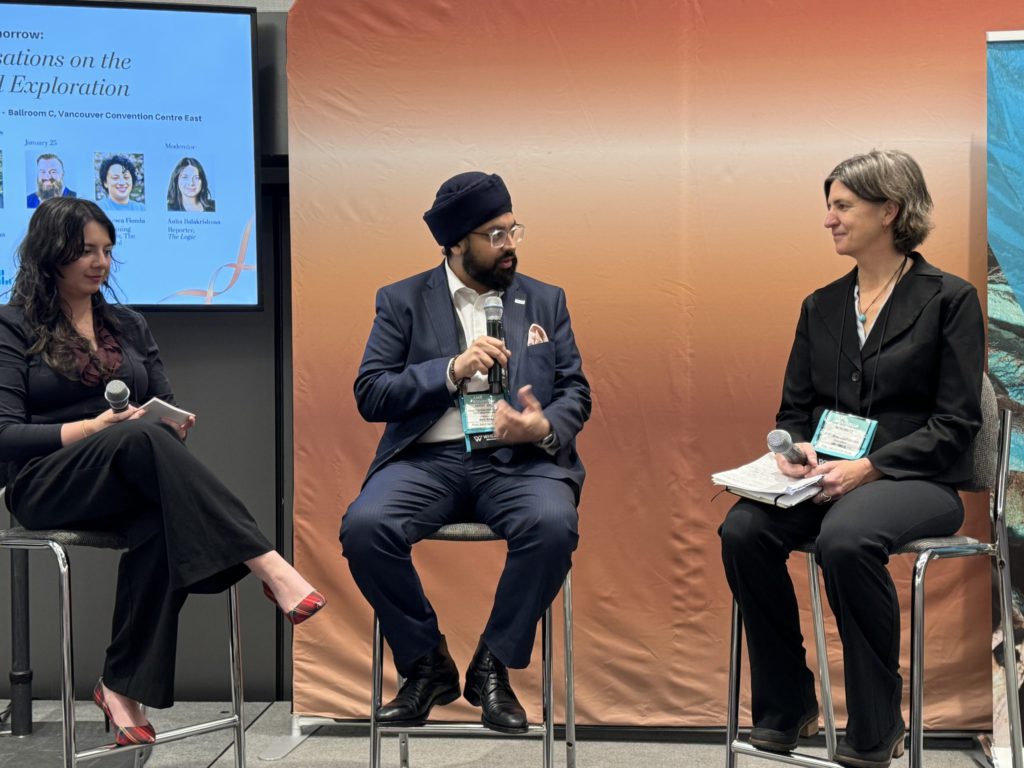AME Roundup conference confronts industry’s thorniest issues head-on

Last week’s AME Roundup conference in Vancouver shattered norms by hosting a session that didn’t shy away from one of the mining industry’s most divisive topics: the clash between resource development and Indigenous land rights.
British Columbia’s free-entry staking system, which the province’s Supreme Court ruled last year does not meet the duty to consult, was one of the contentious issues discussed at a panel on the future of mineral exploration.
The system is at odds with the province’s status as a paragon of regulatory excellence, the conference heard on Jan. 24 during a panel moderated by Anita Balakrishnan of The Logic.
“Bad actors tarnish our industry’s reputation when their actions aren’t constrained by law,” activist Nikki Scuse, co-chair of the non-governmental organization BC Mining Law Reform Network and director of the Northern Confluence Initiative, said.
The Association for Mineral Exploration (AME) hosted the session for the first time seeking to provide a space for opposing viewpoints to be confronted and debated. The conference attracted over 6,200 attendees over four days.
Scuse pointed out the contradiction between B.C.’s adoption of the Declaration on the Rights of Indigenous Peoples Act in 2019 with the Mineral Tenure Act — the “archaic” 19th-century law that regulates claimstaking.
She highlighted the September Supreme Court ruling criticizing the province’s Chief Gold Commissioner for a “one-click” mineral claims process that falls short of meeting the Crown’s duty to consult with Indigenous groups and private landowners.
The court gave B.C. 18 months (now 14) to modernize the act.
Keerit Jutla, AME BC president, noted those efforts involving all stakeholders are underway.
Scuse illustrated the urgent need for reform by sharing anecdotes that included an Indigenous tourism operator in the Caribou region whose post-Covid business revival was jeopardized by nearby prospecting. In another case, a Kamloops couple’s quiet life was disrupted by a prospector, legally backed by a claim on their farm, demonstrating the legal regime’s failure to protect landowners’ rights.
These practices persist, Scuse noted, with some entities brazenly staking claims on Indigenous lands despite legal challenges. She took a firm stance on broader environmental issues, like mining’s intrusion into vital salmon watersheds, and pushed for a shift from gold to sustainable minerals like copper. Scuse’s call for a holistic mining approach includes land use, biodiversity, and long-term environmental stewardship.
In defence of the industry, Jutla, who has a background in Aboriginal law, argued that the sector and provincial regulations do a good job of protecting the environment. He emphasized B.C.’s strong regulatory framework, particularly in environmental stewardship, recognized internationally for its comprehensiveness.
He advocated for transparent, context-specific consultations, especially with Indigenous communities, and supported the practical implementation of UNDRIP principles.
Jutla also stressed the need for distinct conversations at different stages of the mining process and expressed concerns about NGOs potentially overshadowing Indigenous rights holders’ agendas. He highlighted the industry’s commitment to environmental sustainability and its efforts to balance environmental concerns with the practical realities of mining.
More News
{{ commodity.name }}
{{ post.title }}
{{ post.date }}

Comments